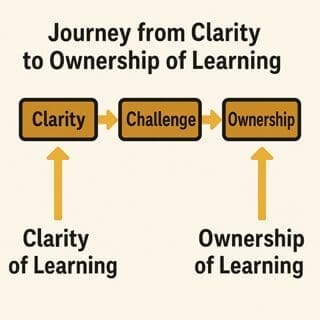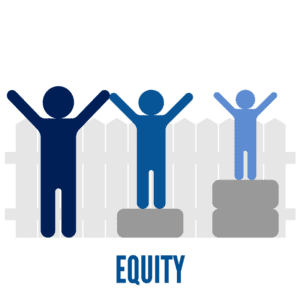Introduction

Empower every learner by transforming clear standards and transparent teaching into true ownership. Explore how the combination of clarity and standards-based learning can create an engaging, impactful, and motivating experience for every learner!
Why Clarity and Standards Matter
When students grasp what they need to learn and the significance behind it, they tend to feel more motivated, involved, and assured in their skills. Merging clear guidance from teachers with standards-based learning makes expectations clear, learning objectives meaningful, and empower each student to take charge of their educational journey.
Key Components for Ownership

Source: RBT from Jon Saphier
The key components for integrating teacher clarity with standards-based learning to ensure every student is equipped to take their educational journey are:
Clear Learning Goals

Learning objectives are stated in student-friendly language and aligned with standards, so students know what they are working toward.
Success Criteria

Concrete examples and rubrics clarify what mastery looks like, helping students self-assess and set personal goals.
Transparent Feedback

On-going, actionable feedback is directly tied to standards, guiding students’ progress and next steps.
Goal Setting and Reflection

Students use clear goals and criteria to set targets, reflect on growth, and adjust their learning strategies.
For more information, check out What Are Learning Goals, Standards, and Learning Targets In Education?
Equitable Access

Clarity and standards ensure all students have the support and challenge they need to succeed, regardless of background.
Strategies for Making Standards Meaningful
To make standards relevant for students, educators can focus on connecting learning to real-world applications, fostering student ownership, and creating engaging learning experiences.
The Impact-Benefits of Clarity and Standards
- Increased motivation and engagement. Students see purpose in their learning.
- Greater independence. Students self-assess and set goals confidently.
- Deeper understanding. Rigorous, clear expectations lead to meaningful mastery.
- Equity. Every student knows what success looks like and how to achieve it.
Blog Post Category
- Build Effective Professional Learning Communities Today
- Cognitive Development A Key Strategies for Success
- Engage Students with Effective Project-Based Learning
- Enhance Learning with Student Agency and Cognitive Mind Skills
- Foster Inquiry based learning for deeper student engagement
- Inclusive Education Proven Strategies for Equity in Schools
- Lesson Planning with Standards for Better Student Outcomes
- Measure Student Success with Clear Success Criteria
- Student Centered Learning Frameworks
- What Students Should Know Common Core Standards
